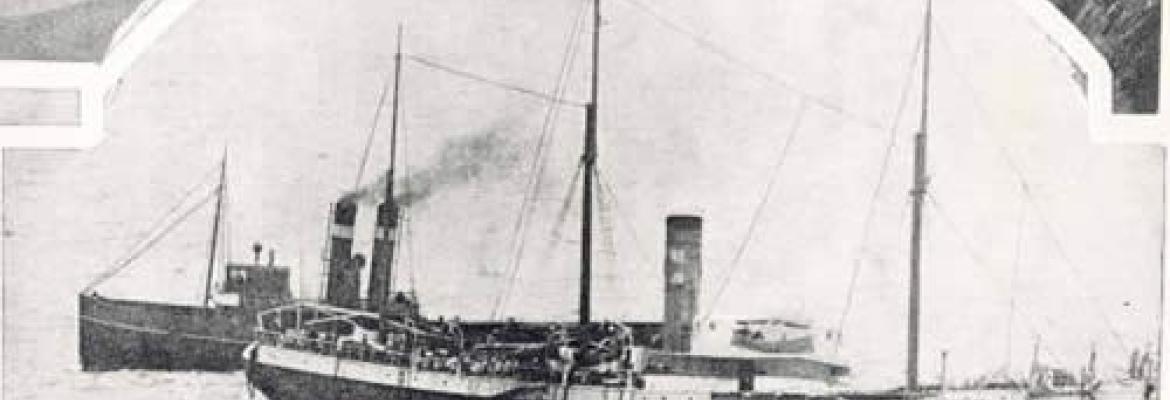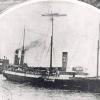
The Petriana (1821 gross tonnage) was a screw steamer powered by both steam and sail. It was owned by the Asiatic Petroleum Company and operating on behalf of the Shell Transport and Trading Company.
The Petriana was bound for Melbourne Victoria from Borneo. It was laden with 1300 tonnes of bulk oil as well as an unrecorded quantity of naptha and benzene. A pilot boarded the vessel at 6 am and proceeded towards the notorious Rip at the entrance to Port Phillip Bay.
The fog was thick and the shoreline was obscured but the pilot hoped the fog would clear by the time the leading lights could be seen. Unfortunately the fog did not clear and the Petriana went aground on Portsea Back Beach at 7 am. Within moments the engine room and stokehold were flooded leaving the vessel without power. Attempts made to refloat the Petriana throughout the day using the steam tug James Patterson were unsuccessful.
The following day, the salvage schooner Enterprise and the tug Eagle were called to assist. It was hoped that the powerful pumps on the Enterprise could remove some of the water from the Petriana allowing her to be refloated; however, both pumps broke down so this effort was abandoned.
The next strategy was to lighten the vessel by releasing the cargo of 1300 tonnes of oil into the sea. In a time before modern-day environmental concerns, the spill was described as 'a film of great beauty, radiating all the colours of the rainbow, spread from Sorrento Back Beach to Point Nepean'. The foul-smelling oil contaminated the beaches for months afterwards.
A final attempt was made on Monday 30 November 1903 by the James Patterson but, by this stage, the ship was so badly damaged that it was formally abandoned. The master, Captain Kerr, and his wife, six officers, a cabin boy, and 27 crew were evacuated after the first failed attempt to refloat the vessel.
The crew were of Chinese and Malay descent, and a national controversy was sparked. Victorian authorities tried to prevent the seamen from landing in line with the Immigration Restriction Act and the White Australia Policy which prohibited immigrants not of European descent from entering the Commonwealth.
Outcome
Once the Petriana was formally abandoned two days after the spill, the crew were sent to Hong Kong aboard a Japanese steamer.
The Australian Prime-Minister at the time, Alfred Deakin, backed up the local authorities and the debate raged in the press for months with letters variously of protest, explanation or apology.
Captain Kerr wrote, 'If this treatment of my crew is a fair specimen of your humanity it is about equal to the worst barbarity of other nations, and if it is forced on you by your laws, I regret to say they are a disgrace to the British Empire'.
The pilot had 20 years’ experience and was held in high esteem; nonetheless his certificate was suspended for 12 months for carelessly navigating a vessel to cause its stranding.
The wreck of the Petriana still lies in shallow water in pieces around 200 metres off Point Nepean.

Petriana with tug James Patterson and pilot steamer in attendance.
Source: Newspaper Collection, State Library of Victoria.
Related information
Anderson, R. (1997) Wrecks on the Reef—a guide to the historic shipwrecks at Port Phillip Head. Heritage Council Victoria, Melbourne.
Williams, PJ. & Serle, R. (1963) Wrecks of Port Phillip Heads 1840 - 1963 by Peter J Williams and Roderick Serle, Maritime Historical Productions, Melbourne. Cited in the Sydney Morning Herald Web Diary, 1 November 2001.
Newspaper Collection, State Library of Victoria. Image reproduced with permission from the State Library of Victoria.